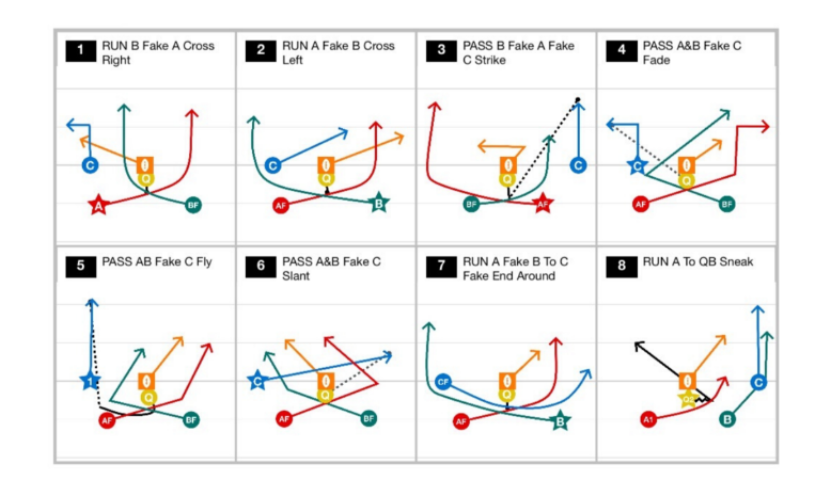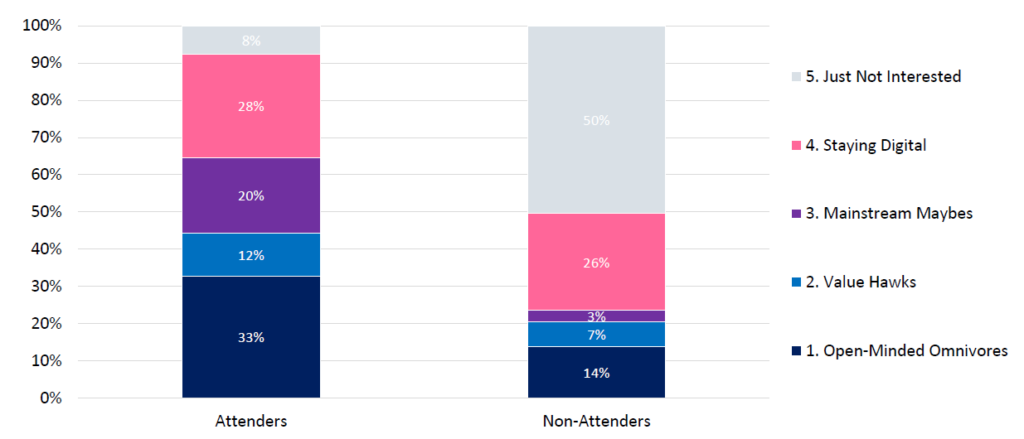The Segmentation Playbook: An Update for 2022–23 and Beyond

Jamie Alexander
Director, JCA Arts Marketing
Last season we introduced the Playbook for Reopening, which gave performing arts organizations a framework for leveraging audience segmentation to revitalize audiences in a new, unknown world.
In this new 2022–23 season, we have fewer unknown variables than last season, since we have a season of data that shows us audience behavior post-COVID. However, we still are working hard to reactivate audience members after the shutdown and bring in new ones—as tickets sales are down significantly relative to pre-pandemic.
Therefore, it’s more important than ever to laser focus our marketing campaigns and ensure we’re targeting our audiences with the right offers to reach our goals for attendance and revenue. Thus, we’ve updated our Playbook for Reopening to create: The Segmentation Playbook.
What is The Segmentation Playbook?
The Segmentation Playbook is a framework that helps you leverage audience behavior to craft effective marketing campaigns—targeted at specific audiences—to reach your goals. It’s based on the idea of a playbook in sports where sport teams lay out strategies in advance to make in-moment decision making easier and more effective.
By crafting a Segmentation Playbook you’ll have a clear view of your target segments, the behaviors you’re encouraging to reach your goals, and campaign plans to inspire those behaviors. Then, during the season and sales cycle, the Segmentation Playbook acts as a guide to monitor progress toward goals and adjust campaign plans as necessary.

Crafting Your Playbook
There are four steps to creating the Segmentation Playbook for your organization:
1. Define your segments – the first step is defining your target segments. A simple segmentation may look at single ticket buyers, multi-ticket-buyers, subscribers, and lapsed equivalents of those segments. A more complex segmentation may divide segments further by behaviors (time of purchase, programming preference, ticket spend) and demographics (geography, age).
2. Define your segment goals – once you’ve defined your segments, set goals for each one. You can do this by breaking down your total attendance and revenue goal for each production (or for the full season) and assigning each segment an individual ticket sales and revenue goal. You can then break this down further and determine, based on past behaviors for that segment, how they will reach these goals. (For example—our multi-ticket buyer segment will reach its goal if 75% of the segment buys four (4) tickets to two shows paying $100.)
3. Define the tactics (or plays!) to reach segment goals – after you define your segment goals, you can craft your playbook. Devise campaign tactics for each segment that are focused on ensuring that segment reaches its goals. For our multi-ticket buyer segment above, you might want to focus on campaign plans that encourage the group to see at least two shows within the season.
4. Monitor and adjust – During the season, track your progress toward each segment’s goal. What segments are falling short of their goals? What segments are surpassing their goals? Don’t just look at ticket sales and revenue, but also look at behavioral metrics like time of booking, average yield, and average party size—is there any metric that’s influencing the segment’s progress toward goal? Review these metrics and then adjust your campaign tactics accordingly.
By following these four steps you’ll end up with a stellar strategy—a Segmentation Playbook!—which will put you in a great position to reach your audience growth and revenue goals.
Need an Assist in Creating Your Organization’s Segmentation Playbook?
You don’t have to go it alone. If you need help developing or reinvigorating your audience as you rebuild after the COVID shutdown—we can help. Contact us to start a conversation today.

